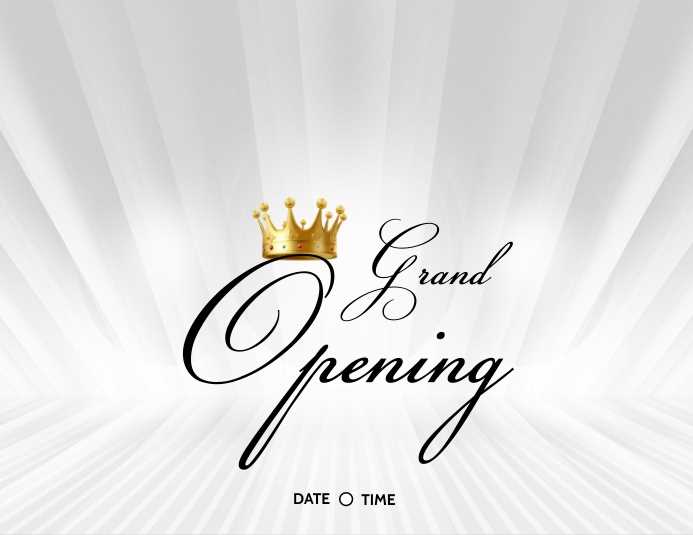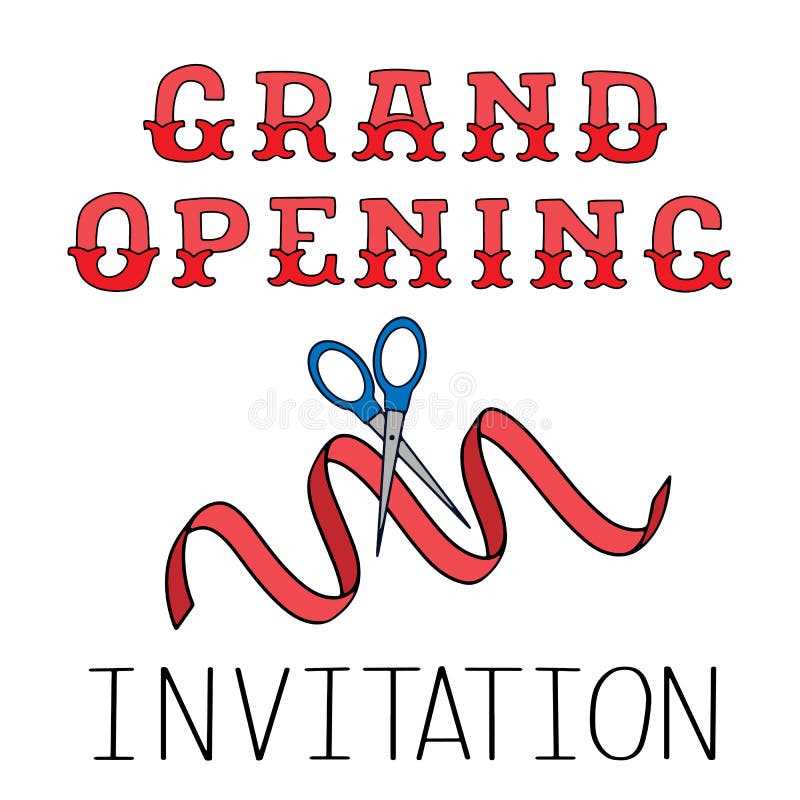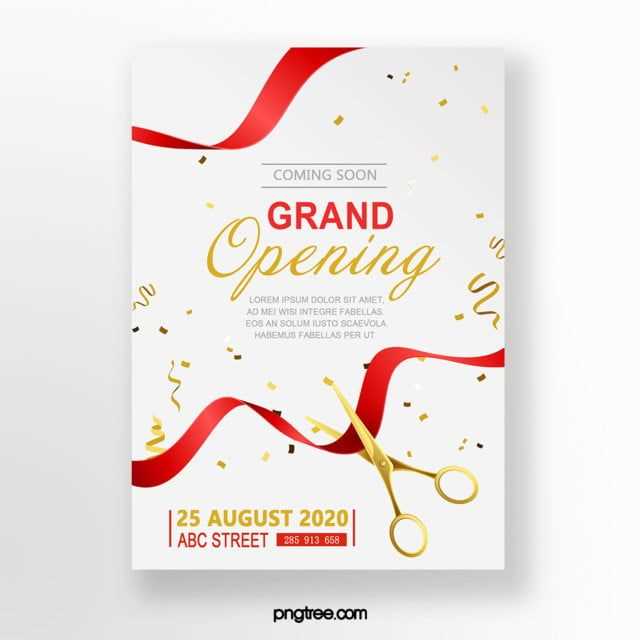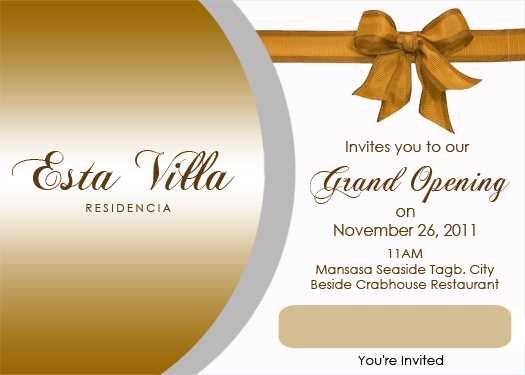Grand opening letter template

Kick off your grand opening with a letter that captures attention and excitement. Start by clearly stating the date, time, and location of the event. This immediate information allows recipients to easily mark their calendars and plan to attend. Add a brief description of what guests can expect – a new product launch, a special discount, or a fun-filled evening. Make it enticing, and include any key highlights that would spark interest.
Personalize your invitation to make your readers feel welcomed. Use direct language and keep it friendly to build a connection with your audience. A warm, conversational tone can make a big difference in drawing people in. Show your enthusiasm for the event and share why you’re excited to celebrate with them.
Lastly, include a call to action that prompts immediate response. Whether you want people to RSVP, follow you on social media, or simply show up, make the next step clear and easy. Reinforce the excitement of the event and let your audience know how much their presence will mean to you.
Grand Opening Letter Template

Begin with a warm greeting to your audience. Express excitement about the new venture and invite people to experience what’s coming. Mention the specific date and location of the event to ensure clarity. Be direct and enthusiastic, conveying the energy behind the grand opening.
Next, highlight key features or services that will be offered at the event. Focus on what makes this opening special and what attendees can expect. Keep the tone upbeat and inviting, making readers feel eager to join in.
Wrap up by offering a call to action. Encourage your audience to mark their calendars, share the news, or RSVP. End with a friendly invitation to connect or reach out for more information. Keep the message clear and focused on building anticipation for the opening event.
Crafting an Attention-Grabbing Subject Line
Keep your subject line short and punchy. Aim for clarity over cleverness, ensuring the message is understood instantly. Include numbers or specific offers, like “50% off this weekend” or “Limited seats available!” to create urgency.
Use personalization to stand out–adding the recipient’s name or location can increase engagement. Test different approaches, such as using questions or direct calls to action like “Are you ready to celebrate with us?”
Avoid using all caps or excessive punctuation, as it may seem like spam. Focus on language that feels conversational and tailored to your audience.
Finally, test subject lines with your audience regularly to refine what resonates best. A/B testing is key to finding the right balance between catchy and clear.
Personalizing the Greeting to Your Audience
Address your audience directly using specific names, titles, or references relevant to their interests. This creates an immediate connection and shows that you’ve put thought into the message.
For instance, if your event is industry-specific, mention that and acknowledge their role within that field. This gives your greeting a sense of relevance and purpose.
Use language that resonates with the group you’re addressing. If you’re inviting professionals, consider using a more formal tone; if it’s a community event, a casual and friendly tone might be more appropriate.
Consider segmenting your audience into different categories, such as VIP guests, long-time supporters, or newcomers. Tailor each greeting to fit the relationship you have with them.
Here’s an example table to help you organize your greeting approach for various audience types:
| Audience Type | Greeting Style | Message Focus |
|---|---|---|
| VIP Guests | Formal, Appreciative | Acknowledge their importance and long-term support. |
| Newcomers | Warm, Inviting | Encourage excitement about new experiences and opportunities. |
| Industry Professionals | Respectful, Knowledgeable | Highlight industry trends and potential collaborations. |
| Community Members | Friendly, Engaging | Express gratitude for their participation and local impact. |
This strategy ensures that each guest feels personally acknowledged, making them more likely to engage with the event or brand.
Highlighting Key Details of the Event

Provide clear information about the time, location, and special activities that attendees can expect. Be specific about the event’s start and end times, along with any schedule highlights such as guest speakers, performances, or product demonstrations. If there are multiple activities, offer a brief outline of the main attractions, including times and locations within the venue.
Event Schedule and Timings

Clearly list all major activities in chronological order. Include times for the opening ceremony, speeches, performances, and any other significant events. If the event spans multiple hours, break it down into sections so attendees can plan accordingly.
Special Features and Attractions
Highlight any unique elements of the event such as giveaways, contests, or special appearances. If guests have the opportunity to interact with featured products or services, make sure this is clearly communicated. Offering precise details can help increase excitement and engagement ahead of the event.
Creating a Sense of Urgency in Your Invitation
Incorporate time-sensitive language in your invitation to make guests feel they must act quickly. Phrases like “Limited availability” or “Last chance to RSVP” help convey urgency. Use specific dates and deadlines to prompt immediate action, such as “Only 3 days left to secure your spot!”
Highlight the exclusivity of the event by mentioning a limited number of invitations or a special offer that expires soon. For instance, “Exclusive access for the first 50 guests!” or “Offer ends at midnight” can motivate recipients to act swiftly.
Appeal to emotions by linking urgency to an experience they won’t want to miss. For example, “Don’t miss out on the chance to be part of something unforgettable!” will make people feel they’re losing something valuable by not responding quickly.
Incorporating Call-to-Action Phrases
Use clear and concise action verbs in your call-to-action (CTA) phrases to inspire immediate action. Phrases like “Reserve your spot” or “Claim your offer now” direct the reader’s attention and prompt them to act without delay. Keep your CTAs specific to the next step you want them to take, whether it’s signing up, exploring a product, or attending an event.
Make sure your CTA is visible and easy to find. Position it prominently within your message, ensuring the reader can see it without scrolling. For example, place it at the end of your letter or within a dedicated section, and highlight it with attention-grabbing formatting.
Be direct and personal. Use phrasing such as “Join us for the grand opening” or “We can’t wait to see you there” to build a connection with your audience. The more personalized the CTA, the more likely readers are to follow through.
- Use action words like “Register,” “Join,” “Get,” and “Discover” to spark urgency.
- Keep the language simple and to the point, avoiding complicated or lengthy instructions.
- Create a sense of urgency by adding time-sensitive elements, such as “Limited spots available” or “Offer expires soon.”
Combine your CTA with an incentive to increase conversion rates. For instance, “Get 20% off your first purchase when you RSVP” can motivate recipients to act quickly. By adding value, you make your invitation more compelling.
Final Touches: Proofreading and Formatting
Proofreading is a critical step to ensure clarity and professionalism in your grand opening letter. Start by reviewing the text for spelling and grammatical errors. Pay attention to word choice and sentence structure to avoid confusion. Read the letter aloud to spot awkward phrasing or unclear ideas.
Consistency in Formatting

Maintain consistent formatting throughout the letter. Use the same font type and size for the body text, and ensure your headings are uniform. Check the alignment of text, margins, and spacing to make sure everything is neat and easy to read. Proper alignment gives your letter a polished look.
Final Check for Flow and Clarity
After proofreading for errors and formatting, review the overall flow. Ensure that the tone is friendly and welcoming, fitting the theme of a grand opening. Make sure each paragraph logically connects to the next, and the message remains clear and inviting. Adjust as needed to maintain a smooth reading experience.